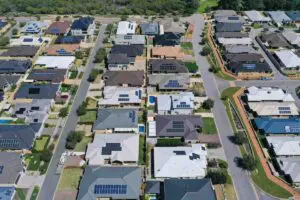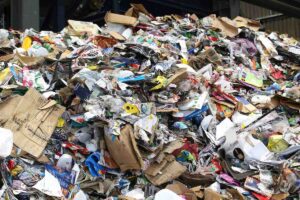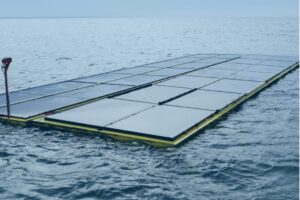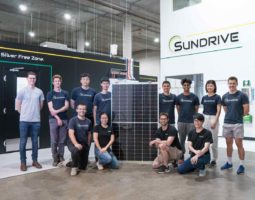The rapid rise of variable PV and wind in Australia means that more storage will soon be required. Snowy 2.0 and Tasmania’s Battery of the Nation pumped hydro energy storage systems could provide some of the storage needed for NSW and Victoria.
However, regions far from the centre that are installing large amounts of solar PV and wind, such as Western Australia, South Australia and far North Qld, will also benefit from more storage to support further deployment.
Many pumped hydro systems have been proposed. Recently, it has been suggested that detailed costing of these proposed systems is higher than expected.
In this article we argue that alternative sites could offer substantially lower capital costs. This highlights the importance of choosing the best sites to minimise the cost of storage.
Pumped hydro comprises about 95% of global storage power capacity and 99% of global storage energy capacity. Batteries occupy most of the balance of the electricity storage market including utility, home and electric vehicle batteries.
Batteries are rapidly falling in price and can compete with pumped hydro for short-term storage (minutes to hours).
However, pumped hydro continues to be much cheaper for large-scale energy storage (several hours to weeks). Most existing pumped hydro sites are located on rivers in conjunction with hydroelectric schemes but a far larger number of potential sites are located away from rivers (“off-river”) because most of the world’s land is not near a river.
An off-river pumped hydro system comprises a pair of artificial reservoirs with area of a few square km, spaced several km apart, with an altitude difference (“head”) of several hundred metres, and connected with a pipe or tunnel containing a pump/turbine.
The reservoirs may be specially constructed (“greenfield”) or may utilise old mining sites or existing reservoirs (“brownfield”).
Closed loop off-river pumped hydro utilises conventional hydroelectric technology for construction of reservoirs, tunnels or pipes, powerhouse, pump/turbine, control systems, switchyard and transmission, but in a novel configuration.
Schemes are away from rivers and are designed to hold small volumes of water, so flood risk and control cost is minimal.
For example, a pair of 100 hectare reservoirs with a head of 600 metres, an average depth of 20 metres, a usable fraction of water of 90% and a round trip efficiency of 80% can store 18 Gigalitres of water with energy potential of 24 Gigawatt-hours (GWh), which means that it could operate at a power of one Gigawatt (GW) for 24 hours.
This far exceeds the power and energy of any battery.
However, finding good sites away from rivers is not obvious even for experienced hydro engineers. The shape of the hills as well as their height is important.
The use of efficient computer algorithms is key to searching large areas for good sites. A global survey of greenfield pumped hydro energy storage was undertaken by our group at the Australian National University.
We found 616,000 good sites around the world with the enormous energy storage potential of 23 million GWh, which is 100 times more than required to support a 100% renewable global electricity system.
About 3000 good pumped hydro pairs were found in Australia, which is several hundred times more than required to support 100% renewable electricity.

Our group at ANU is now working on expanding this work to a brownfield survey, with ARENA support. We are identifying every existing reservoir and mining pit and are then surveying the surrounding area to find out whether there is a possible matching reservoir site that could be used to form a good pumped hydro pair.
To give a flavour of good closed loop off-river greenfield sites, several from each mainland state are tabulated below together with links that allows direct visualization on the Australian Renewable Energy Mapping Infrastructure site (AREMI). A wealth of detail is provided on AREMI for each of the 616,000 sites around the world.
Detailed spreadsheets and links are also available here.
For context, to support 100% renewables electricity (90% wind and solar PV, 10% existing hydro and bio), Australia needs additional storage energy and power of about 450 GWh and 20 GW respectively.
The cost class of each site (A-E) in Table 1 represents the relative capital cost, with class A costing approximately half as much per unit of energy capacity as class E according to our cost model. Our model, while independently developed, is consistent with the benchmark reference in an Entura study.
Snowy 2.0 is included for comparison but is too far outside our cost model parameters to be compared on cost. Several South Australian sites covering the range 2-50 GWh are included for interest.
Doubling the head doubles the energy stored and halves the effective cost of the reservoirs (all other things being equal). Doubling the head also halves the water flow for a given power rating, reducing the size and cost of the pipe/tunnel and pump/turbine.
Slope is the head divided by the horizontal separation and should ideally be large to minimize the length of the tunnel connecting the reservoirs.
Water/Rock is the ratio of impounded water to the volume of the rock used to form the reservoirs and should be large to minimize reservoir cost (which is largely determined by this ratio).
Larger energy and power generally produce lower unit cost through economies of scale (up to a certain size).
Several closed off-river pumped hydro systems are being investigated in Australia. Some were considered in a study by Entura summarised in Table 2.
A striking feature of Table 2 is the small head, small power, small energy storage and small Water/Rock ratio compared with Table 1.
On the other hand, slope is large, particularly for Kidston. Based on these inputs, these projects would fall below cost class E in our cost model.
In South Australia, there is a flock of interesting sites east of the Gulf with heads double that of the sites listed in Table 2, with good access to roads, water and transmission.
These alternative sites are superior according to our cost model. Of course, there may be other factors that need to be accounted for these sites to be feasible.
Australia has not built a pumped hydro scheme for forty years. It is not unusual in the early stages of an industry for costs to be higher than expected.
However, Australia has demonstrated with its rapid cost reductions in wind and solar development that we can quickly learn to do things better.












